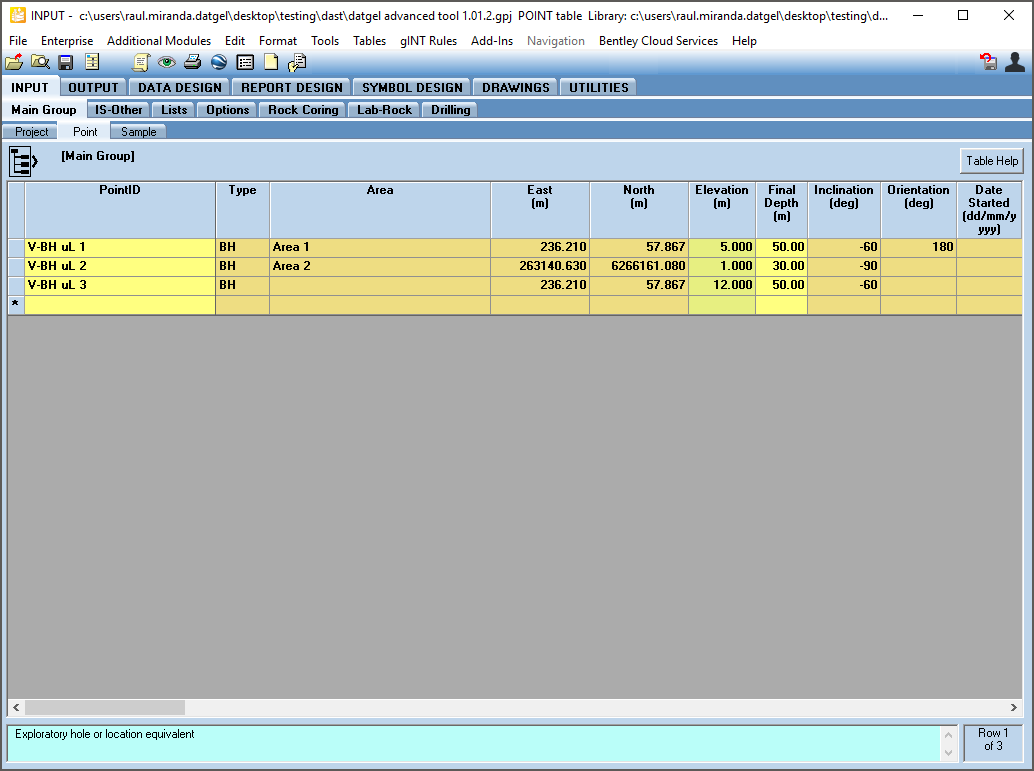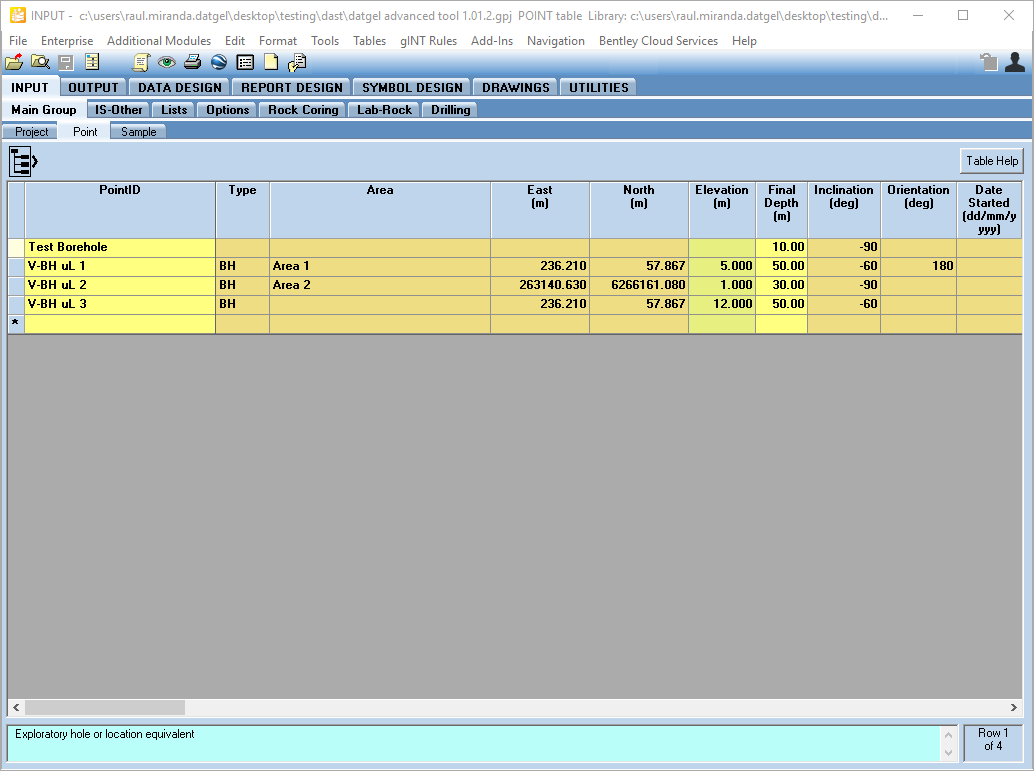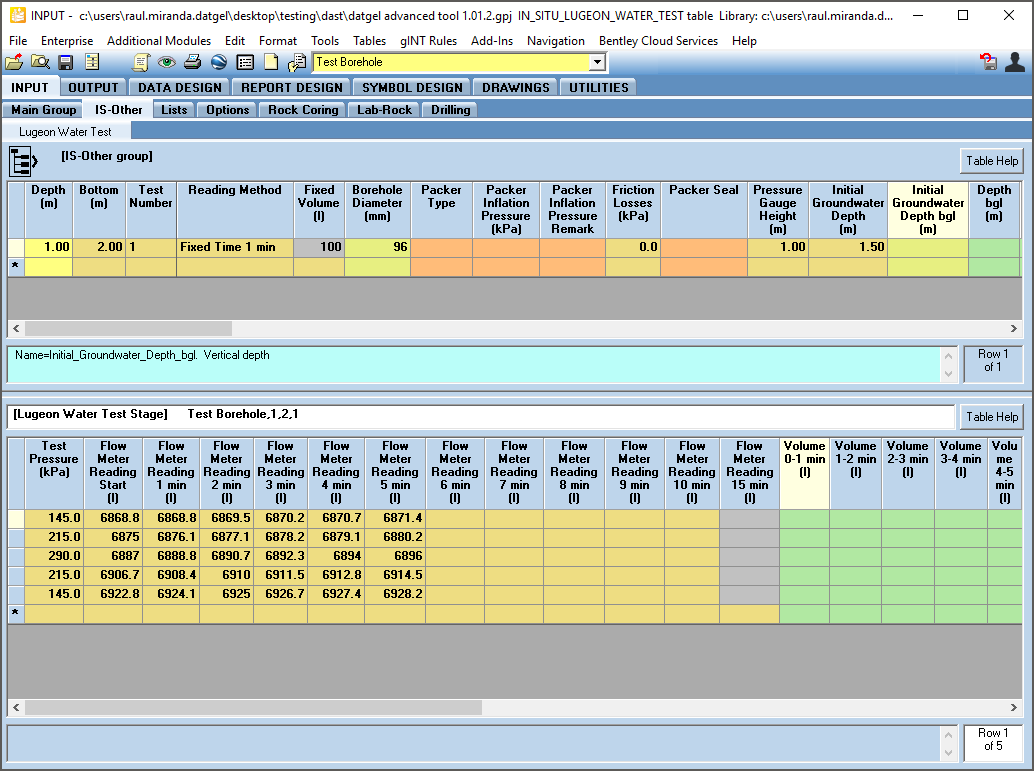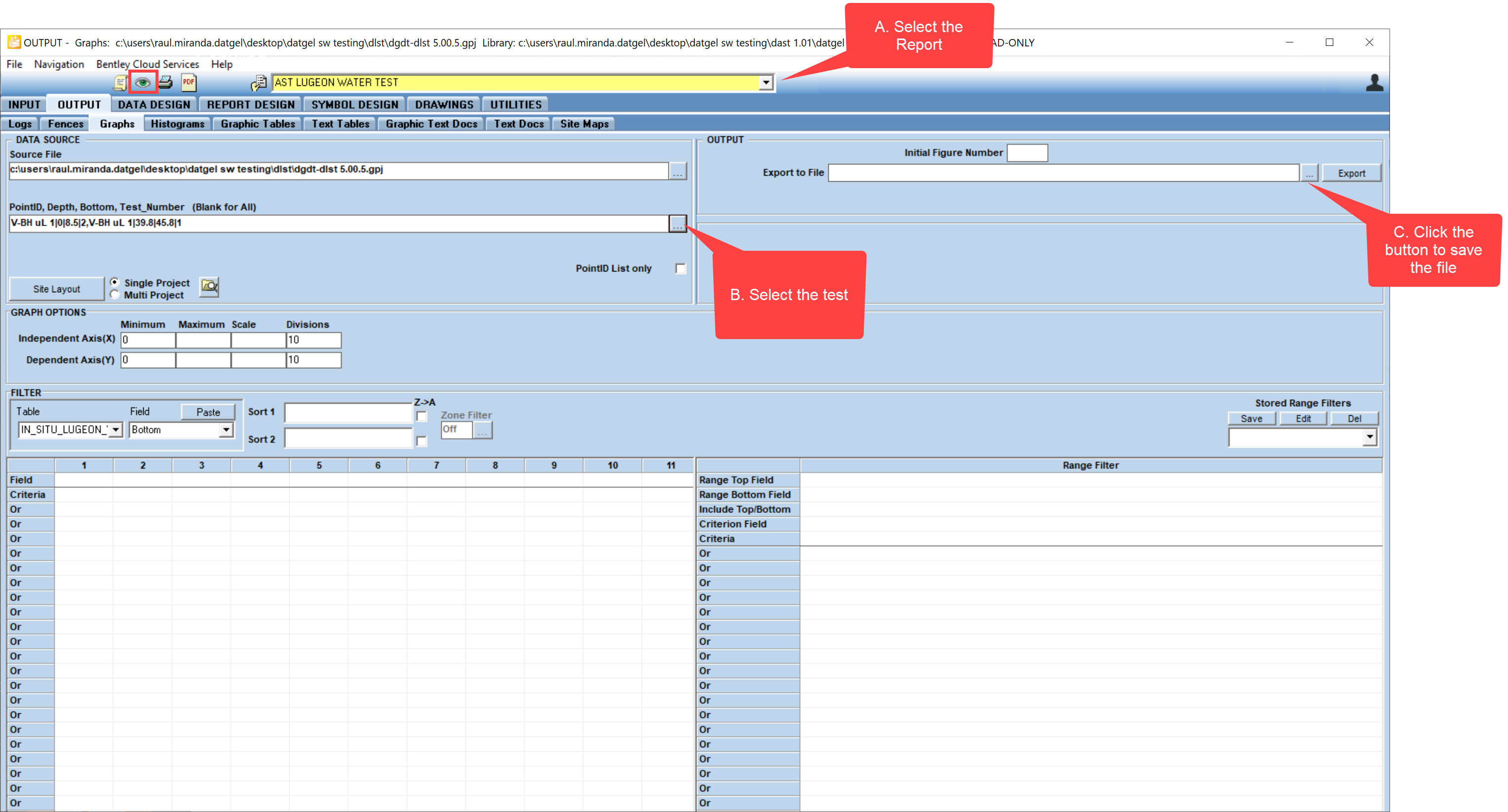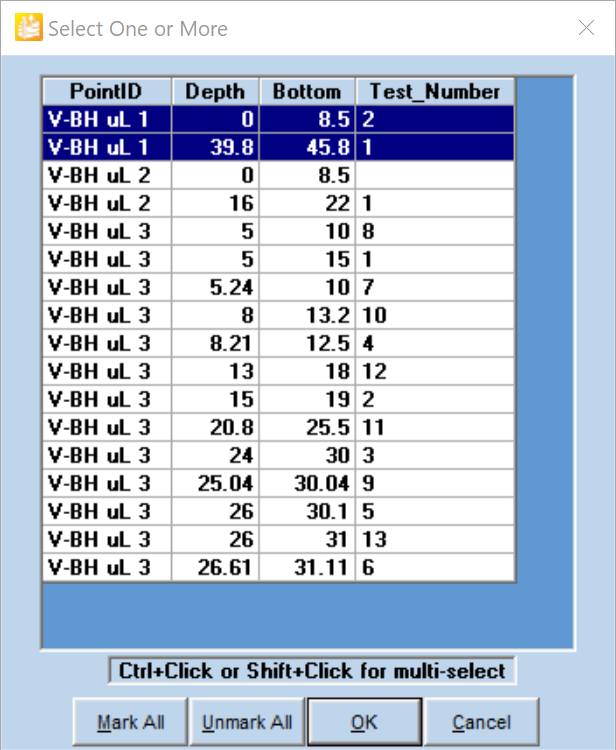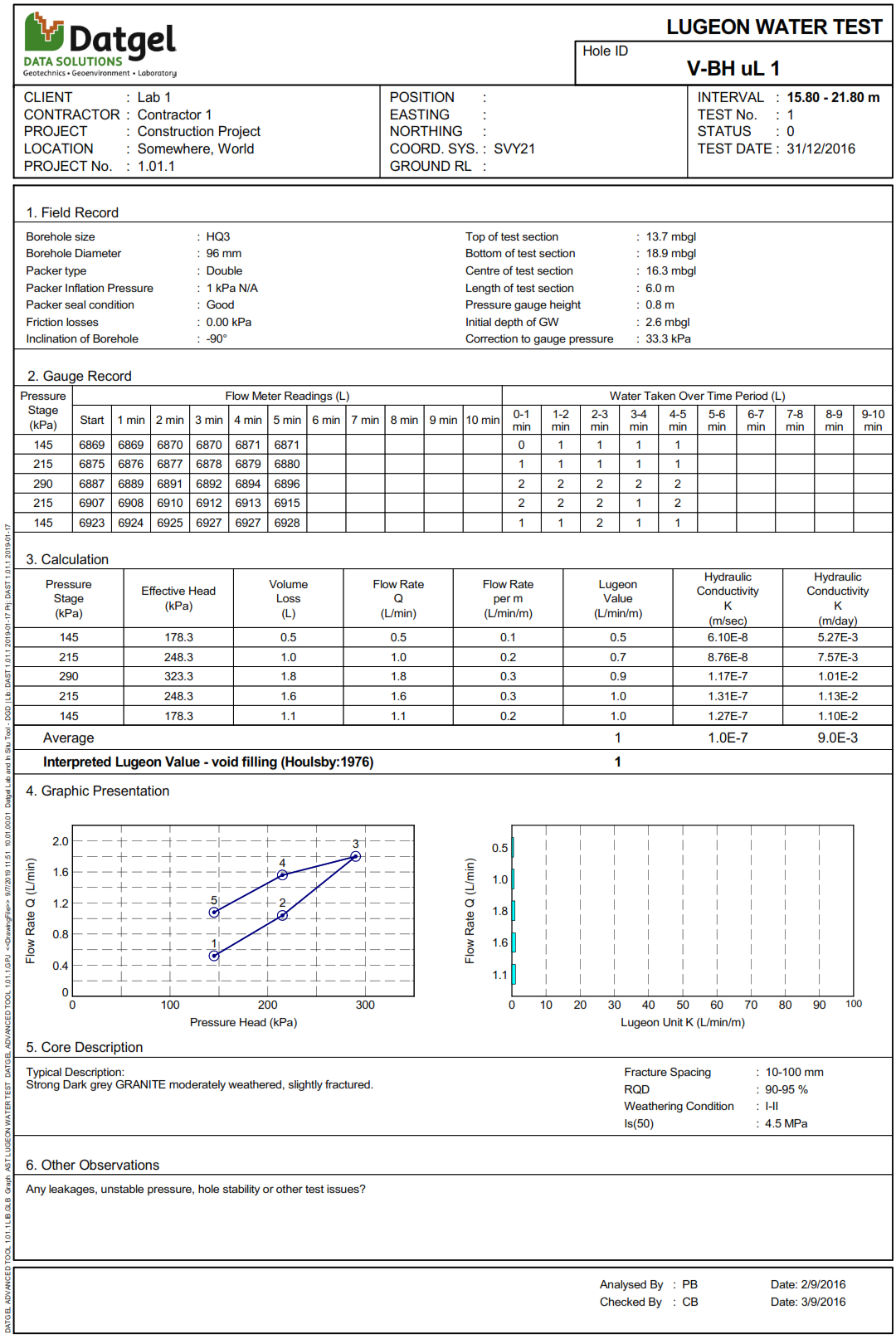Quick Start Guide
Overview
This page guides you through the setup and explains basic use of the Advanced In Situ Tool.
gINT
gINT Professional or Professional Plus must be installed and licensed on your computer to use the Advanced In Situ Tool.
Download Datgel Advanced In Situ Tool
Download the Advanced In Situ Tool package and Datgel Toolbox installer from datgel.com.
- Full version: https://www.datgel.com/customer/downloadableproducts
- Trial version: https://www.datgel.com/trial-software
Install Datgel Toolbox
Before Installation
A few basic preparations can help ensure an effortless installation.
- Make sure that the computer where you plan to install the program meets the minimum hardware and software requirements.
- Connect your PC to Internet before installation (the process may need a working Internet connection).
- The Datgel Toolbox program requires that the Microsoft .NET 4.8 framework is installed on the PC prior to the installation of the Tool. If your PC does not have this, then it will be automatically downloaded and installed during the Tool installation process.
- Log into the PC with Administrator privileges before starting installation.
- It is recommended that you exit out of other applications that maybe running on your PC.
- Close gINT before you start installation.
Installation
- Run the installer, typically named Datgel.Toolbox.20##.#.#_YYYY-MM-DDTHHmmss.exe.
- When you come to the Components screen, be sure to select this product, or you can simply install all Components.
- The gINT*.exe.config files for gINT versions V8i and 10..# are edited by Datgel software during installation.
Datgel Licensing
Product Package Content
The downloaded .zip contains all you need to install and evaluate the Datgel Advanced In Situ Tool. The content is:
- Documentation folder includes:
- Example reports
- EULA
- Links to the product and licensing online user guides
- Link to email to support.
- gINT Files folder includes:
- "dast X.XX.X lib trial.glb" or "dast X.XX.X lib.glb" (gINT library file)
- "dast X.XX.X.gpj" (gINT project file)
- "dast X.XX.X.gdt" (gINT data template)
- "datgel in situ tool 1.00 zlt 00.gci" (zone load test import corresponcned file)
- "V-ZLT3 - Test.dat" (example zone load test data logger file)
Extract the entire contents of the zip to a folder on your local computer.
Using the Tool
Open gINT
- Start gINT
- When you open gINT if it asked for a library, then browse to the downloaded extracted .zip folder and select the library file (.glb). Otherwise after gINT opens select File > Change Library, and browse to the aforementioned library. Note: the library is locked for the Trial version.
- Select File > Open Project. Browse to the downloaded extracted .zip folder and select the project file (.gpj)
Review existing example data
The gINT files included in the package contain some example data that covers all type of calculations included in the Tool.
Main Group | Point table stores the general information related to the Borehole (Hole depth, coordinates, elevation, etc). Each row is a borehole.
IS-Other | Lugeon Water Test table stores the test data. You may review the example data, what fields are needed for each calculation and which results are calculated. To see the calculations, you need to delete values on the green cells (calculated field) and click Save or Ctrl+S. The results will be written to the green cells again.
Create a new borehole and test
- In the Main Group | Point table enter a new name in the PointID field and enter the Final Depth. Other fields are optional.
- Go to IS-Other | Lugeon Water Test table and select your new borehole from the yellow drop-down list.
- Enter your data for a test.
- Click Save or Ctr+S to launch the calculations and check the results.
For a detailed explanation about the calculations refer to Lugeon Water Test.
Output a Report
- To export the report in pdf, go to OUTPUT | Graphs.
- Select the AST LUGEON WATER TEST report from the yellow drop-down list.
- Select the desired test from the KeySet picker: Click on the
- Review the report.
